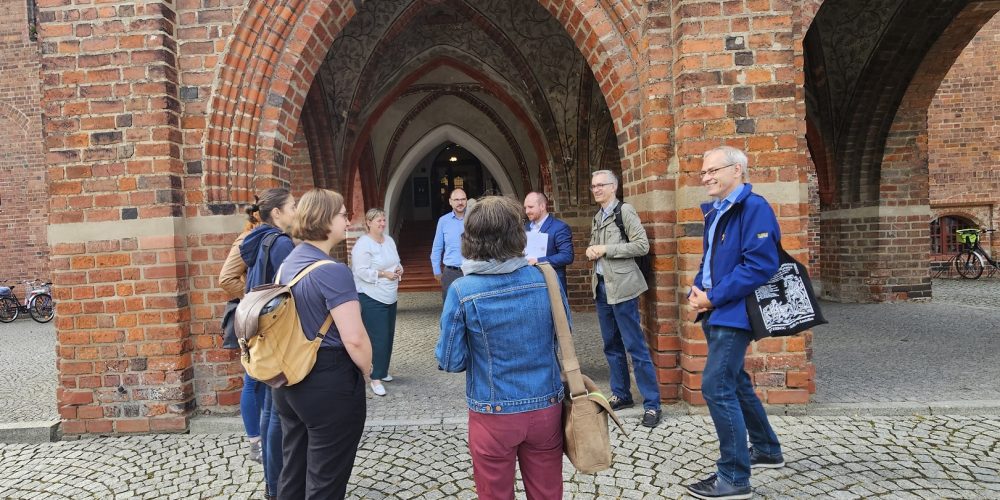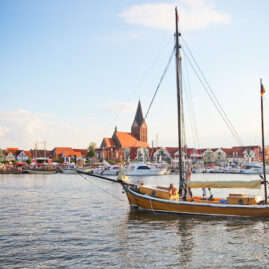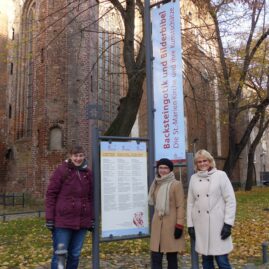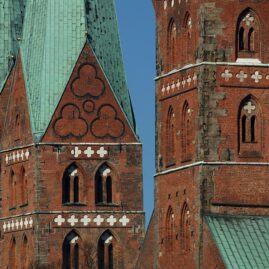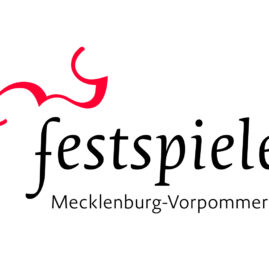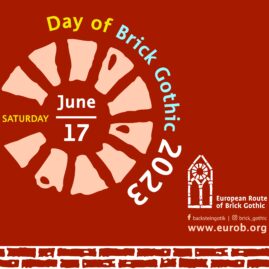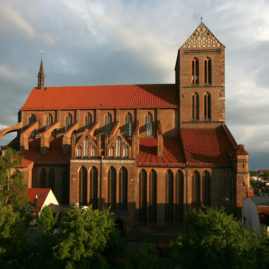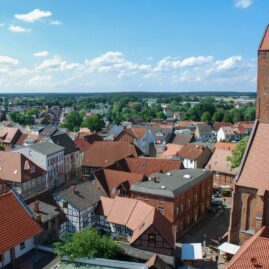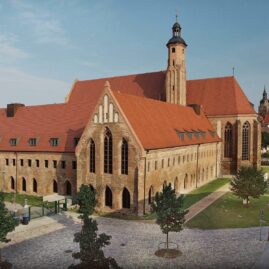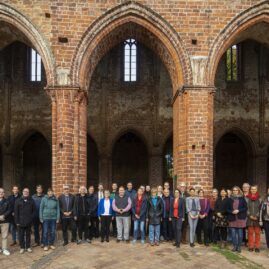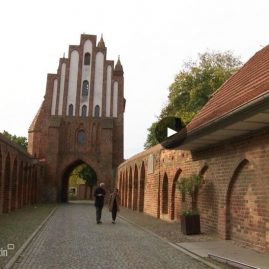On 25 July, the members of the scientific working group of the European Route of Brick Gothic met for academic discussions in Jüterbog. The participants included building and art historians, archaeologists and monument conservationists from the whole of Germany. The town of Jüterbog became a member of the European Route of Brick Gothic, which is a recognised non-profit association, in 2016. The meeting was admirably organised by Andreas Rau from the Jüterbog business promotion agency. After the event he commented that the scientific meeting had been a highly informative day. The participants were warmly welcomed by Christiane Lindner-Klopsch, the deputy mayor of the town.
The director of Jüterbog’s museums, Norbert Jannek, provided support to the meeting and enabled the members to gain a thorough first hand impression of the outstanding Brick Gothic sights in the town and to exchange their views and experience with other specialists.
The meeting began with a focus on the Brick Gothic buildings in Jüterbog, including the very well preserved mediaeval town hall, the former Franciscan monastery, which is now the “Mönchenkloster” cultural ensemble with an outstanding museum, and the richly decorated church of St. Nikolai. Even today the old sacristy, with its well preserved decorations, offers a rare impression of the intensive colours used in mediaeval interiors. The participants were also able to view some wonderful but lesser known buildings in the town, such as Gothic historic town houses.
After a refreshment break in the café “Die Förste”, the group travelled to the former Cistercian monastery of Zinna, which is only a few miles from Jüterbog.
During the day, Mr. Jannek enabled the group to enter buildings and rooms which are not normally accessible, including magnificent interior rooms in Jüterbog town hall, concealed Brick Gothic cellar vaults and the construction work which is being carried out in the new abbey at Zinna monastery.
The extremely interesting tour of the town of Jüterbog and Zinna monastery, during which the members learned many exciting details, gained exclusive insights and engaged in extensive specialist discussions, was of great scientific value for the working group, the association European Route of Brick Gothic and also the town of Jüterbog. The knowledge acquired during this day will be incorporated into the research work of the members in relation to Brick Gothic architecture in Jüterbog, Brandenburg and other areas.
You can find more information about the Brick Gothic sights in Jüterbog here.







